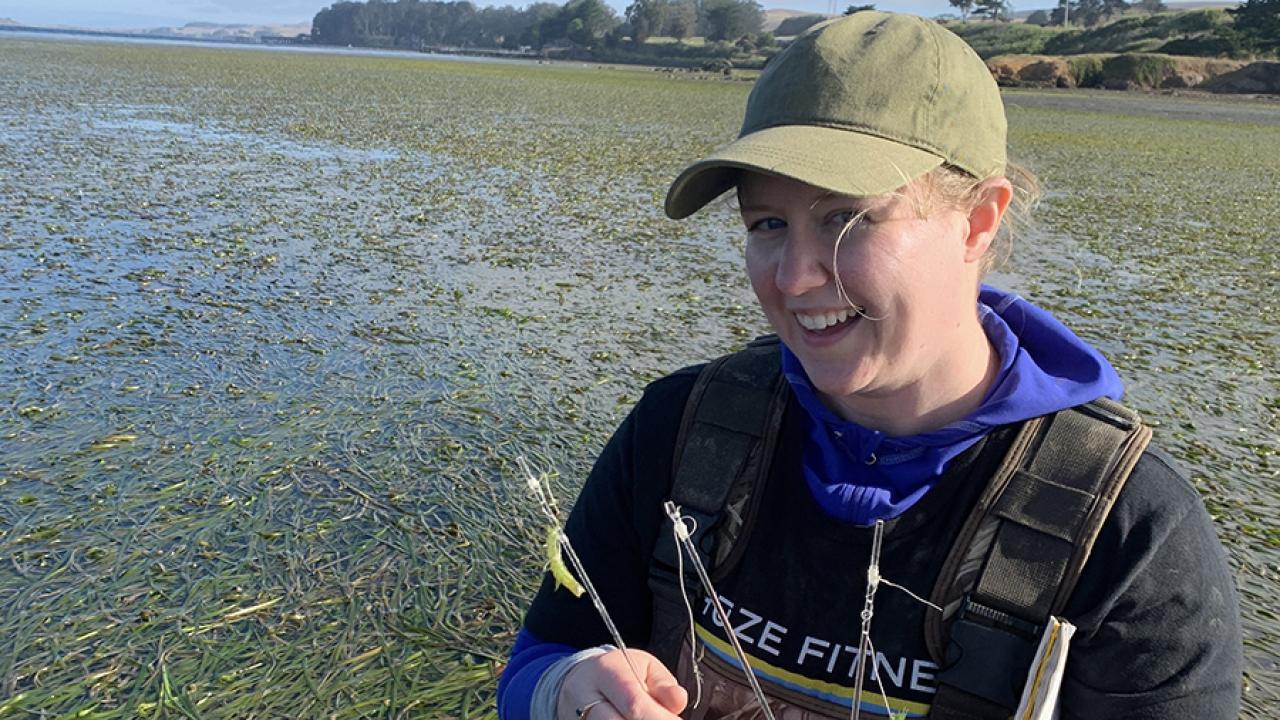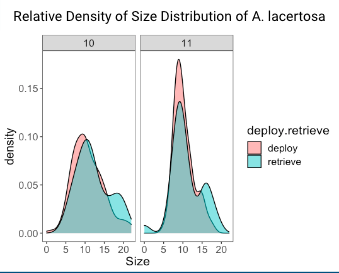
during her first day in the field.
Don’t Be the Lacertosa to Know!
Cassidy Gordon is graduating with her Associates Degree in Natural Sciences from Santa Rosa Junior College in December and transferring to Sonoma State University to study Marine Biology for the Spring 2023 semester. She assisted PhD student Claire Murphy with her research on the predation of amphipods and isopods in Bodega and Tomales Bays this summer.

Before this internship I knew I wanted to study Marine Biology… but I had no idea what that looked like in real life and I certainly didn’t see a clear path to my goal. Studying in school is one thing, but how do we take the things we learn there and apply them to actual research? How do we get into research in the first place? These questions and so many more plagued me constantly before being accepted into the Bodega Marine Lab Internship program through Santa Rosa Junior College. Now that my summer experience is wrapping up I feel optimistic, driven, and able to see the steps I need to take to reach my destination.
From the first introduction email my mentor Claire was welcoming and enthusiastic. Hearing her explain her research on amphipods and isopods and witnessing her excitement and passion for what she studies was immediately inspiring. During my first week at the lab I got to participate in lab and field work, preparing the little crustaceans to be placed in the bays before tagging along for the actual deployment. Claire tethers four different species that are commonly found in the seagrass in Tomales and Bodega Bays and places them at 6 different sites at low tide. After 24 hours, she returns to collect the tethers and documents how many of each species has been eaten.
As a mini-project to support Claire’s research, I focused on one specific species, Ampithoe lacertosa, determining if the size of the amphipod had any impact on predation rates. To do this, I would measure each amphipod before they were deployed and then measure the remaining amphipods once they were retrieved. We did this for two separate deployments - two weeks apart - and compared the data with the rough hypothesis that if size did matter, the larger amphipods would potentially be eaten more during the second week due to the growth of the local fish over the course of the period. Claire showed me how to use RStudio to analyze the data we had collected by running a t-test and creating graphs to represent our findings. Ultimately, the t-test and the graphs both indicated that size was likely not a factor impacting predation, however the graphs (like figure 1 below) did open the door for further study due to a potential for a “size refuge” as shown by the small blue hump representing the larger retrieved amphipods. A size refuge is an ecological term meaning once an organism reaches a certain size they have an advantage - in this case they are less likely to be eaten.
While I have a feeling no path in academia is straightforward, this internship has provided information, connections, and experience that have laid a foundation for me to move forward confidently. More than ever, I am certain that this is what I want to do and the type of people I want to surround myself with. I highly recommend this internship to anyone who is interested in scientific research, especially those with a passion for the ocean.
Want to learn more about the SRJC-BML Internship Program?
Visit the SRJC-BML Internship Program Website
You can also show your support for this program by making a gift.
